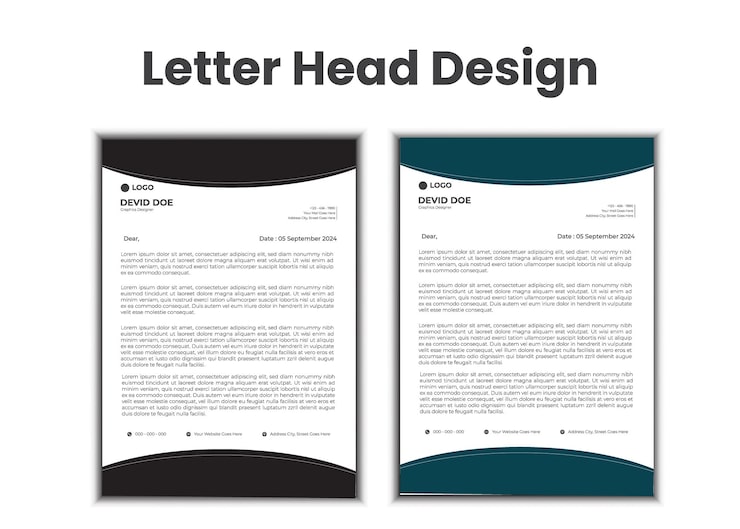Formal Letter Format plays a vital role in a student’s academic journey, helping them communicate officially with teachers, principals, or other authorities. Knowing how to write a proper formal letter not only improves writing skills but also builds confidence in professional communication.
In today’s digital world, formal writing remains relevant whether you are applying for leave, submitting a request, or communicating with organizations. A well-structured letter reflects discipline, clarity, and respect—qualities that every student should master.
Importance of Learning the Formal Letter Format
The Formal Letter Format helps students maintain professionalism and clarity while expressing their thoughts. Unlike informal writing, it follows a specific structure with a polite tone and organized layout.
When writing to a school principal or a college authority, using the correct format ensures that your message is taken seriously. It also trains students in professional etiquette, which becomes essential later in life for job applications or official correspondence.
Writing a good formal letter also enhances a student’s understanding of tone, grammar, and sentence structure—skills that are valuable for academic excellence.
Understanding the Structure of a Formal Letter Format
The Formal Letter Format includes several key elements arranged in a clear order. Each section serves a unique purpose in presenting the message properly.
A typical structure includes:
Sender’s Address → Date → Receiver’s Address → Subject → Salutation → Body → Complimentary Close → Signature.
Every part of this format helps maintain professionalism. The sender’s and receiver’s addresses clarify the communication path, while the subject line highlights the purpose in a single glance.
Students should always write in short paragraphs for easy readability and avoid using emotional or casual language.
The Tone and Language of a Formal Letter
The tone of a formal letter should always be respectful, precise, and polite. When writing to an authority figure, avoid slang, abbreviations, or overly casual phrases.
For example, instead of writing “I need a leave because I’m tired,” a better version would be, “I would like to request a short leave due to health reasons.”
The Formal Letter Format encourages clarity and objectivity. The goal is to communicate the message directly without unnecessary elaboration. Always keep the sentences short, structured, and grammatically correct.
Example of a Formal Letter Format For Students
To understand this better, here’s how a well-written letter looks in practice:
Sender’s Address:
45, Green Valley Road
Mumbai, Maharashtra
Date:
31 October 2025
Receiver’s Address:
The Principal,
ABC Senior Secondary School,
Mumbai.
Subject:
Request for Leave Due to Family Function
Salutation:
Respected Sir/Madam,
Body:
I am a student of Class 10, Section B. I would like to request a two-day leave from 2nd to 3rd November to attend a family function. I assure you that I will complete all pending assignments after returning to school.
I kindly request you to grant me permission for the mentioned period.
Complimentary Close:
Yours obediently,
Rohit Sharma
This is the ideal Formal Letter Format for students—neat, organized, and polite. It shows respect and ensures the message is delivered clearly.
Common Mistakes Students Make in Formal Letter Writing
Many students make simple yet significant mistakes while writing formal letters. Some forget to include the date or subject, while others mix informal tone with formal structure.
Another common mistake is writing long, complex paragraphs. Formal letters should be brief and well-organized. Avoid excessive explanations and focus on the main purpose of the letter.
The Formal Letter Format helps avoid such errors by following a consistent structure. Once the pattern becomes familiar, students can write any type of formal communication with ease.
When and Where to Use a Formal Letter
Formal letters are used for specific academic or official situations—requesting leave, submitting applications, giving feedback, or making official complaints.
For instance, students may write to the principal to request a transfer certificate or to the teacher for assignment extensions. Similarly, college students may use formal letters for internships or university communication.
The Formal Letter Format ensures all such communication is handled professionally, showing respect and maturity.
Why the Right Format Reflects Good Communication Skills
Good writing is a reflection of a disciplined mind. When students use the proper Formal Letter Format, they demonstrate attention to detail, which is an essential soft skill in professional life.
In today’s competitive world, how you write matters as much as what you write. Letters with correct grammar, structure, and tone leave a positive impression on the reader.
This habit also carries forward into job applications and emails later in life. Employers and institutions appreciate individuals who can express themselves professionally.
Adapting the Formal Letter Format in the Digital Era
Even though digital communication has replaced traditional letters, the Formal Letter Format remains important. Emails to professors, organizations, or companies follow similar principles—formal tone, structure, and clarity.
Students should learn to apply these writing principles while drafting formal emails. A polite greeting, clear subject line, and proper closing make the communication professional and effective.
In many institutions, teachers specifically evaluate writing assignments based on structure and tone, further emphasizing the need for a solid understanding of formal writing.
Tips for Mastering the Formal Letter Format
To write effectively, students should read examples of well-written formal letters and practice regularly. Start by drafting short letters for everyday purposes, such as leave requests or permission letters.
Always proofread before submission to avoid grammatical errors. Reading the letter aloud helps identify awkward phrasing or tone issues.
With time, writing in the Formal Letter Format will feel natural. Practice helps students develop confidence and clarity in all forms of communication.
Formal Letter Format and Its Role in Personality Development
Learning to write formal letters enhances more than just writing skills—it shapes personality and discipline. Students who write with structure and politeness learn to express respect and professionalism in daily life.
Schools that teach Formal Letter Format help students communicate effectively in both academic and professional settings. These lessons stay valuable for years, preparing them for interviews, job applications, and corporate communication.
Developing this habit early builds a foundation of strong language skills and organized thinking, essential for success in every field.
Formal Letter Format in Educational Curriculum
Most schools include letter writing as part of language or communication curriculum. Teachers emphasize structure, tone, and grammar while guiding students to follow the Formal Letter Format.
This practice not only improves marks in exams but also teaches lifelong communication etiquette. Students who master this format stand out for their writing precision and maturity.
With continuous practice, they can adapt to advanced forms of communication—emails, cover letters, and reports—easily and effectively.
Read also:
whimsical meaning
ketchum meaning
demure meaning
mellifluous

